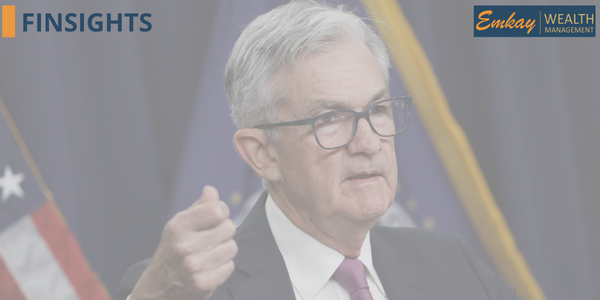The address of the Fed Chair at Jackson Hole was on ‘monetary policy and price stability’. There was nothing much that was unexpected in the speech except that it scaffolded in an unusually emphatic way the importance of price stability, that is, lower inflation, as a prerequisite for sustainable economic growth. In an invariably divided market, like it is always, between the two sides, of which one would like to see the US economy booming, and the other group would tend to believe that a deep recession might set in. But the mind of the central bank is different. Irrespective of, but reasonably mindful, what is happening in the markets, the central banks have to weave their polices around more profound and long lasting social and societal welfare objectives. This is what the Fed Chair meant when he said, “In particular, without price stability, we will not achieve a sustained period of strong labour market conditions that benefit all. The burdens of high inflation fall heaviest on those who are least able to bear them.”
The essential message here is that the Fed will continue to take strong action through higher interest rates, with the Fed Funds target rate being forecast to move up from 2.50% to 4%. It can’t be clearer when Powell says, “Restoring price stability will take some time and requires using our tools forcefully to bring demand and supply into better balance. Reducing inflation is likely to require a sustained period of below-trend growth.”
The Fed will not be swayed unduly by a one month or two months moderation in inflation numbers. Inflation has moderated from 9.10% to 8.50%, but the Fed would be looking for consistent moderation for any slowing down, or rationalization, of the pace of future rate hikes. The Fed is targeting 2% inflation, not more, not less. Therefore, it is clear that the policy will continue to be restrictive till the target is achieved. The Fed Chair also added that ‘premature loosening of policy’ proved to be the wrong approach in the past. This guidance was soon reflected in the traditional market segments with a drastic fall in prices.
The more interesting part of the address was the three lessons that were shared in the speech. The first lesson is that central banks can and should take responsibility for delivering low and stable inflation. There is not much point in the debate whether it is demand-side or supply-side. The responsibility to deliver price stability is unconditional. The second lesson is that the public’s expectations about future inflation can play an important role in setting the path of inflation over time. Quite often lower inflation expectations could result in lower numbers over time, but that should not result in complacency because there are times when inflation is high, and a large number of households and consumers would expect prices to remain high. The third, the central bankers “must keep at it until the job is done.” Till inflation is reined in, the task is not finished.
Outlook
The affirmation from the Fed of a restrictive policy, the consequences for the rest of the world is far from over. The Dollar Index will gradually edge higher and the interest rate policies for the rest of the world too would be more inclined towards hard money policy. This assumes a greater importance in the light of likely depreciation in the local currencies. With credit growth at 18% and the deposit growth much lower, and an expansive government borrowing programme staring at a dwindling systemic liquidity, further rate hikes from the RBI, and higher market yields could be anticipated. However, a robust economic growth, will keep the domestic equity market well supported even in the face of corrective downward movements, because the only intelligent option is to accumulate whenever the market corrects. The weather at Jackson Hole was quite salubrious on Friday evening, and the forecast is warmer days over the weekend and beyond!

